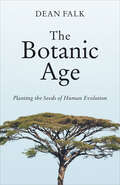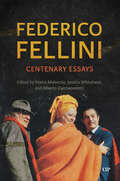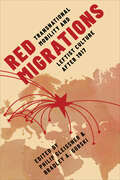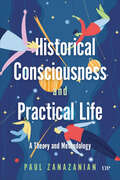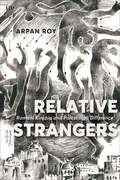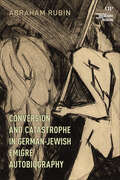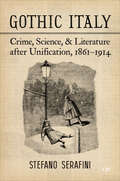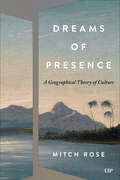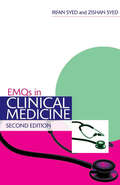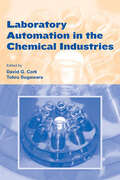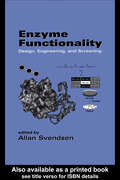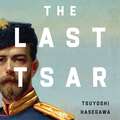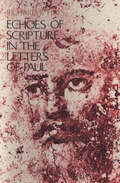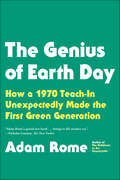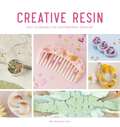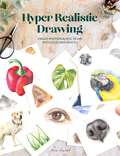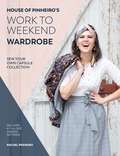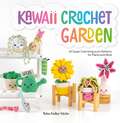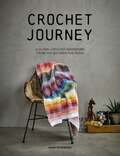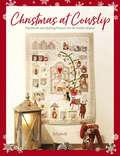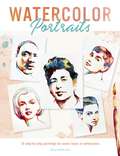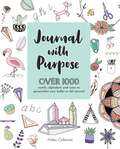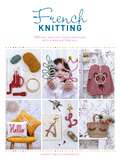- Table View
- List View
The Botanic Age: Planting the Seeds of Human Evolution
by Dean FalkHow and why did humans get to be so clever and thoughtful? The beginning of the Stone Age, marked by the invention of stone tools, has traditionally dominated discussions about the origin and evolution of human intelligence. However, feminist anthropologists have long theorized that the first tools were actually nests, slings, and baskets that would not have survived in the archaeological record. In The Botanic Age, leading evolutionary anthropologist Dean Falk argues that millions of years of weaving botanical materials and woodworking preceded the Stone Age, facilitating the basic neurological underpinnings for humankind’s later creative and technological inventions. She further suggests that mothers and infants may hold the key to understanding a series of events that eventually kindled the emergence of advanced cognitive abilities, including language and music. The Botanic Age takes readers millions of years into the past to a time before our relatives began living full-time on the ground. From stationary hominin sleeping trees in Africa to beached trees on the shores of Indonesia, the impact of the Botanic Age on hominin evolution was far-reaching. Only from this vantage point “in the trees” can we really begin to understand how and why our ancestors evolved – and how we became human.
Federico Fellini: Centenary Essays (Toronto Italian Studies)
by Marco Malvestio Jessica Whitehead Alberto ZambenedettiA complex and at times controversial film-maker whose career spanned the second half of the twentieth century, Federico Fellini (1920–1993) remains central to the Italian cultural imagery and the object of ongoing debates and critical scrutiny at home and abroad. Images from his films – Gelsomina’s tears, Marcello’s sunglasses – have become global signifiers not only for Fellini and Italian cinema but for Italy itself, as steadily lodged in the world’s collective unconscious as the Colosseum’s arches and Venice’s gondolas. Marking the centenary of Fellini’s birth, Federico Fellini: Centenary Essays reassesses the film-maker’s legacy with diverse contributions from established and emerging Fellini scholars as well as renowned Canadian film-makers. From literary influences to pictorial references, from artistic collaborations to politics, and from exhibition history to revivals, the collection covers the pivotal aspects of Fellini’s poetics through contemporary methodological tools and features a wide array of scholarly approaches. With complexity and nuance, the book takes stock of the enormous cultural legacy of one of the most celebrated directors in cinema history and is essential reading for scholars and cinephiles alike.
Truth Is Trickiest: The Case for Ambiguity in the Exeter Book Riddles
by Jennifer NevilleAt the end of the tenth-century English manuscript the Exeter Book, there is a collection of almost one hundred riddles. They are notable for many reasons, but one feature in particular has challenged modern readers: their lack of solutions. In Truth Is Trickiest, Jennifer Neville argues that the absence of solutions, rather than being an unfortunate accident, uncovers an essential quality of these texts. In opposition to the general expectation that a successfully solved riddle will have one correct answer, Neville argues that the Exeter Book riddles are written to generate multiple solutions. The correct response to an Exeter Book riddle is not a single, elegant solution but instead an ongoing process of interpretation that leads readers to question what they think they know. Truth Is Trickiest contextualizes its readings within the larger field of Old English poetry, early medieval material culture, and Anglo-Latin riddles. The book pursues the central issue of interpretation in relation to social values, craftsmanship, hierarchical social structures, violence, irony, humour, and sexuality. It concludes with a full list of previously proposed solutions to document the history of the ongoing argument that the Exeter Book riddles have provoked.
Red Migrations: Transnational Mobility and Leftist Culture after 1917
by Philip Gleissner Bradley A. GorskiTogether with a new political, social, and cultural order, the Bolshevik Revolution also brought about a spatial revolution. Changed patterns, motivations, and impacts of migration collided with new cultural forms and aesthetic mandates. Red Migrations highlights the various multidirectional and multilateral transnational movements of leftist thinkers, artists, and writers. The book draws on avant-garde poets such as David Burliuk, Marxist theoreticians such as János Mácza, and “fellow travellers” such as Langston Hughes, revealing how leftists of all stripes were inspired and at times impelled by the Soviet Revolution to cross borders. It explores how the resulting circulation of ideas, aesthetic forms, and individuals not only contributed enormously to the ferment of creative activity in the early Soviet years, but also deeply informed international leftist aesthetics and political practice throughout the twentieth century. The robust and diverse transnational networks created by these circulations are at the centre of this volume. With original archival research and insightful analyses, Red Migrations sheds light on the ideals, aspirations, and disappointments of leftist transnationalism from the 1920s through the 1960s and the aesthetic forms they engendered.
Historical Consciousness and Practical Life: A Theory and Methodology
by Paul ZanazanianHistorical Consciousness and Practical Life introduces a novel approach to examining how people construct and employ historical knowledge in their daily lives. In viewing history as an embodied cultural practice that constitutes the background to our meaning-making, the book demonstrates how researchers and others can investigate the ways in which people make sense of time’s flow in their now-moment engagements with the world and use that information to position themselves regarding key social problems with historical roots. The book provides a glimpse at how humans enter historically embedded thinking problems, seeking to resolve them. Paul Zanazanian draws on a study of the community leaders of English-speaking Quebec to illustrate the practical life methodology’s workings. In looking at their different uses of history for strengthening their group’s vitality in the province, he identifies five key stances these leaders employ for positioning their sense of purpose and responsibility for securing English-speaking Quebec’s future. Ultimately, Historical Consciousness and Practical Life argues that community leaders who complicate and problematize their uses of history are the best positioned to make positive transformations for their group.
Relative Strangers: Romani Kinship and Palestinian Difference (Anthropological Horizons)
by Arpan RoyExamining how memory, intergenerational transmission, and kinship work together, Relative Strangers sheds light on Romani life in Palestine. Arpan Roy presents an ethnographic portrait of Dom Romani communities living between Palestine and Jordan, zooming in on everyday life in working-class neighborhoods, and under conditions of perpetual war and instability. The book focuses on how Doms are able to sustain ethnic difference through kinship, even when public performances of difference are no longer emphasized – a kind of alterity that is neither visible by obvious markers like race or religious difference, nor detected by the antennas of the state. Drawing on long-term ethnographic fieldwork in Jerusalem, Ramallah, and Amman, Roy makes a case for such alterity for Romani people and other groups in the region. Analysing intimate ethnographic scenes through anthropological theories of kinship, psychoanalysis, social theory from the Global South, and more, the book reveals how alterity in the Middle East does not adhere to rigid identitarian categories. Ultimately, Relative Strangers demonstrates the inadequacy of transposing models of pluralism centred on European and American experiences of minoritization onto other contexts.
Conversion and Catastrophe in German-Jewish Émigré Autobiography (German and European Studies #55)
by Abraham RubinConversion and Catastrophe in German-Jewish Émigré Autobiography is a collective biography of four German-Jewish converts to Christianity, recounting their spiritual and confessional journeys against the backdrop of the Holocaust and its aftermath. Focusing on personal testimonies that fuse historical trauma and spiritual illumination into one narrative, the book explores how Jewish emigrants interpreted their experiences of persecution and displacement through the hermeneutics of Christian conversion. It draws on autobiographies, novels, religious writings, and newspaper articles as well as unpublished archival materials such as diaries, lecture notes, and private correspondence. The book explores how chosen genres of writing both enabled and hindered self-understanding. It also assesses whether the literary paradigm of Christian conversion, highlighting an individual’s separation from a past sinful self, is suitable for expressing a collective catastrophe. Applying psychoanalysis, disability studies, and autobiographical theory to the life writing of converted Jews, the book offers new avenues for conceptualizing the Jewishness of historical subjects who disavowed their ties to Judaism. Published in association with the United States Holocaust Memorial Museum.
Gothic Italy: Crime, Science, and Literature after Unification, 1861–1914 (Toronto Italian Studies)
by Stefano SerafiniThe Gothic, proliferating across different literary, socio-cultural, and scientific spaces, permeated and influenced the project of Italian nation-building, casting a dark and pervasive shadow on Italian history. Gothic Italy explores the nuances, contradictions, and implications of the conflict between what the Gothic embodies in post-unification Italy and the values that a supposedly secular, modern country tries to uphold and promote. The book analyses a variety of literary works concerned with crime that tapped into fears relating to contagion, race, and class fluidity; deviant minds and abnormal sexuality; female transgression; male performativity; and the instability of the new body politic. By tracing how writers, scientists, and thinkers engaged with these issues, Gothic Italy unveils the mutual network of exchanges that informed national discourses about crime. Stefano Serafini brings attention to a historical moment that was crucial to the development of modern attitudes towards normality and deviance, which continue to circulate widely and still resonate disturbingly in contemporary society.
Dreams of Presence: A Geographical Theory of Culture
by Mitch RoseThroughout the twentieth century, the question of culture was a central pillar of social scientific thought. Today, however, the concept has disappeared from the academic landscape. Despite pressing political debates about culture wars, identity politics, cultural appropriation, and nativism, the concept of culture is no longer seen as a credible explanatory tool. Dreams of Presence provides a novel theoretical approach to the question of culture and will be of use to geographers, anthropologists, sociologists, and social theorists grappling to understand why culture continues to be a dominant political force in our contemporary world. Drawing on Heidegger, Levinas, Derrida, and Žižek, Mitch Rose provides an existential, rather than sociological, account of culture, conceptualizing it as a refuge where subjects endeavour to establish ownership over a life that perpetually eludes them. The book argues that culture is a claim; not something subjects ever have but something they desire; not something properly present but a dream of presence: an imagination of identity we cultivate, care for, and materially build in order to assure ourselves that we are sovereign, self-standing beings.
EMQs in Clinical Medicine (Medical Finals Revision Series)
by Irfan Syed Zishan SyedEMQs are a popular method of assessing how broad a knowledge of medicine an undergraduate has acquired. They can, however, be difficult to prepare for, and the best way to build understanding and confidence is with practice.Presenting 100 key EMQs covering the core areas of medicine and surgery, care had been taken by the authors to structure the q
Laboratory Automation in the Chemical Indus
by David G. Cork Tohru SugawaraFeaturing extensive calculations and examples, this reference discusses theoretical and practical aspects of short-circuit currents in ac and dc systems, load flow, and harmonic analyses to provide a sound knowledge base for modern computer-based studies that can be utilized in real-world applications. Presenting more than 2300 figures, tables, and equations, the author explores matrix methods for network solutions and includes load flow and optimization techniques. He discusses ac and dc short-circuit systems calculations in accordance with standards set by the American National Standards Institute (ANSI) and the International Electrotechnical Commission (IEC).
Enzyme Functionality: Design: Engineering, and Screening
by Allan SvendsenEnzyme Functionality serves as a conduit for trailblazing research in enzyme engineering-relating current understanding of sequence families, the new notion of enzyme structure classes, and modern methods in protein engineering, design, and directed evolution to accelerate the development of novel enzyme functionalities. This reference gathers the
The Last Tsar: The Abdication of Nicholas II and the Fall of the Romanovs
by Tsuyoshi HasegawaA HISTORY TODAY BOOK OF THE YEAR'Certain to become the definitive work' DOUGLAS SMITH'Elegantly written and magisterially researched' ROBERT SERVICE'Masterful . . . a chilling lesson' VLADISLAV ZUBOKThe definitive story behind the self-destruction of the autocratic Romanov dynasty, by the world's foremost expert.When Tsar Nicholas II fell from power in 1917, Imperial Russia faced a series of overlapping crises, from war to social unrest. Though Nicholas's life is often described as tragic, it was not fate that doomed the Romanovs - it was poor leadership and a blinkered faith in autocracy.Based on a trove of new archival discoveries, The Last Tsar narrates how Nicholas's resistance to reform doomed the monarchy. Encompassing the captivating personalities of the era, it untangles the struggles between the increasingly isolated Nicholas and Alexandra and the factions of scheming nobles, ruthless legislators, and pragmatic generals who sought to stabilize the restive Russian empire either with the Tsar or without him. By rejecting compromise, Nicholas undermined his supporters at crucial moments. His blunders cleared the way for all-out civil war and the eventual rise of the Soviet Union.Definitive and engrossing, The Last Tsar uncovers how Nicholas II stumbled into revolution, taking his family, the Romanov dynasty, and the whole Russian Empire down with him.
Echoes of Scripture in the Letters of Paul
by Richard B. HaysPaul’s letters, the earliest writings in the New Testament, are filled with allusions, images, and quotations from the Old Testament, or, as Paul called it, Scripture. In this book, Richard B. Hays investigates Paul’s appropriation of Scripture from a perspective based on recent literary-critical studies of intertextuality. His uncovering of scriptural echoes in Paul’s language enriches our appreciation of the complex literary texture of Paul’s letters and offers new insights into his message. "A major work on hermeneutics. . . . Hays’s study will be a work to use and to reckon with for every Pauline scholar and for every student of Paul’s use of Old Testament traditions. It is sophisticated, in both a literary and theological sense, and written with considerable wit and confidence."—Carol L. Stockenhausen, Journal of Biblical Literature "Hays has without doubt posed the right question at the right time within the horizon of a particularly important problematic. . . . A new beginning for the question concerning the reception of the Old Testament in the New."—Hans Hübner, Theologische Literaturzeitung "A powerful reading. . . . [Hays’s] careful and fresh exegesis . . . challenges not a few traditional or highly regarded readings. . . . A major contribution both to Pauline studies and to our understanding of earliest Christian theology as a living dialogue with the scriptures of Israel."—James D. G. Dunn, forthcoming in Literature and Theology "A fresh interpretation of Paul’s references to the Jewish Scriptures. . . . Written in a lively, semipopular style, this important study succeeds in showing that Paul’s scriptural quotations and allusions are often more ’polyphonic’ and rhetorically meaningful than traditional exegesis has allowed."—David M. Hay, Interpretation: A Journal of Bible and Theology
The Genius of Earth Day: How a 1970 Teach-In Unexpectedly Made the First Green Generation
by Adam RomeThe first Earth Day is the most famous little-known event in modern American history. Because we still pay ritual homage to the planet every April 22, everyone knows something about Earth Day. Some people may also know that Earth Day 1970 made the environmental movement a major force in American political life. But no one has told the whole story before. The story of the first Earth Day is inspiring: it had a power, a freshness, and a seriousness of purpose that are difficult to imagine today. Earth Day 1970 created an entire green generation. Thousands of Earth Day organizers and participants decided to devote their lives to the environmental cause. Earth Day 1970 helped to build a lasting eco-infrastructure—lobbying organizations, environmental beats at newspapers, environmental-studies programs, ecology sections in bookstores, community ecology centers. In The Genius of Earth Day, the prizewinning historian Adam Rome offers a compelling account of the rise of the environmental movement. Drawing on his experience as a journalist as well as his expertise as a scholar, he explains why the first Earth Day was so powerful, bringing one of the greatest political events of the twentieth century to life.
Nazi Spies & Collaborators in Britain, 1939–1945
by Neil R. Storey"...reveals the climate of fear along with the identities and case studies of suspected collaborators in key invasion areas." —ARGunners.comThe true extent of Nazi secret agent activity in Britain during the Second World War has received little attention. In large part this is due to the highly classified nature of the subject. This fascinating book uses recently released documents to explore how German agents penetrated our borders and explains methods of agent recruitment. Some spies were arrested and handed over the MI5 for interrogation. Several were turned and became ‘double-cross’ agents, while others were tried and executed or incarcerated in Camp 020 and other facilities. There were also those who came and left undetected and were only revealed after Nazi records were seized. The story, however, does not end there. While British authorities urged the public to beware of spies and posters warned ‘careless talk costs lives,’ the actual existence of Nazi collaborators in Britain was played down. Author Neil R Storey’s discovery of MI5’s and Regional Security Panels’ ‘Black Lists’ of those considered to be ‘likely to assist the enemy’ in the event of invasion reveals the climate of fear along with the identities and case studies of suspected Nazi collaborators in key invasion areas. This book is a gripping exposé of the very real threat posed by Nazi undercover operatives and collaborators in Britain during the Second World War.
Creative Resin: Easy Techniques for Contemporary Resin Art
by Mia Winston-HartResin craft is an exciting way to make jewellery and other accessories. Learn how to create everything from earrings to key rings with this definitive guide to resin craft. This collection of techniques will get you started on your resin journey even if you've never tried it before and, if you do have some experience, there are 17 inspirational projects to make. Resin craft offers so many possibilities to create original jewellery and accessories that will amaze your family and friends, and it is easy to do at home with just a small number of tools and materials. This collection is packed full of step-by-step instructions for techniques such as mixing and pouring resin, creating your own moulds, and how to use pigments and inks. Author Mia Winston-Hart also explains how to use botanicals with resin, and she has advice for how to source and prepare your own botanicals for really bespoke pieces, with instructions for drying your own flowers and plants. There is comprehensive information about all the safety issues surrounding resin craft and the author explores the various different types of resin available including plant and vegetable-based resins, and how to choose and use them safely. There are also instructions on how to create your own moulds alongside the different resin techniques, as well as 17 eye-catching resin projects. All of the projects are accompanied by step-by-step photography so you can see exactly what to do at each stage. Choose your favourite from this collection which includes floral earrings; heat proof coasters, a beach scene tray, a galaxy themed table top, a shell comb, a flower and gold leaf keyring, glittery hair clips and a floral phone case. Some of the many techniques covered include: sanding, deep pouring, making your own moulds, how to avoid bubbles in your work, de-moulding, mixing and pouring, working with different layers, and drying and preserving botanicals. There are comprehensive step-by-step instructions for the projects including how to add jewellery findings, as well as working with different moulds and materials. There is even a trouble shooting section so you can iron out any problems once you start putting your newfound skills into practise.
Hyper Realistic Drawing: Create Photorealistic 3D Art with Coloured Pencils
by Amie HowardLearn how to create realistic 3D art with this collection of step-by-step techniques and tutorials for creating hyperrealistic art using coloured pencils. The trend for hyper realistic artworks featuring high shine subjects is inspiring a new generation of artists. Take your art to the next level with this collection of step-by-step techniques and tutorials for creating hyper realistic artwork. Artist and author, Amie Howard, is an expert in how to get the most from coloured pencils and she takes you through all the key techniques for rendering realistic representations of everything from pets to water. The first part of the book explores basic drawing techniques including blending, shading, glazing and scumbling - a technique used to create a slick surface texture. There are simple practise exercises for each of the techniques sections so that you can experiment and get comfortable with the different methods before trying them out on a final artwork. This section includes advice about how to get the perfect blend of colours and textures as well as tips about adding in the fine details that make all the difference. The step-by-step tutorials feature a wide range of subjects including animals, portraits, food and drink so you will learn how to recreate a large number of different surfaces and textures. The chapters are broken up into sections: Surfaces; Animals; Birds, People and Other Textures which looks at a range of different natural and synthetic textures including tree bark, grass, a soft drink can and a shiny sweet wrapper. All of the tutorials have multiple step-by-step images so you can see how the forms and textures are built up over a series of stages. Amie shares her tips and tricks for creating incredibly realistic representations of textures including feathers and fur and there are up close studies for a cat's eye, a dog's nose and a single feather so you can the details involved in these projects. Other up close studies include lips and a nose and a bird's beak and eye. The instructions will allow you tackle challenging subjects such as ripples on water and ice in glass by breaking down the drawing process into clear step-by-step instructions and photographs, allowing you to follow the artist at each step.
House of Pinheiro's Work to Weekend Wardrobe: Sew Your Own Capsule Wardrobe
by Rachel PinheiroSew your own capsule wardrobe to see you through the week to the weekend! Revitalise your wardrobe with this capsule collection from sewing expert Rachel from the House of Pinheiro. The collection includes the perfect separates to take you through the working week to the weekend including a jumpsuit, day dress, trench two piece, kimono dress and versatile shirt dress. Rachel includes a main pattern for every day of week and then offers variations for how to dress it up for a meeting or down for the weekend. There is advice on how to change the look of the pieces through fabric choices and styling tips, as well as a techniques section featuring Rachel's tips on how to get the best fit for your body type and how to measure yourself correctly to ensure you get the perfect fit every time. Garments include on trend staples and reinvented basics to create an exciting collection of 7 patterns, which can be used to create numerous different outfits.
Kawaii Crochet Garden: 40 Super Cute Amigurumi Patterns for Plants and More
by Melissa Bradley-VatcherCrochet a garden of kawaii happiness with this super-cute collection of 40 amigurumi patterns! Let Melissa Bradley-Vatcher of Yarn Blossom Boutique lead you down the garden path to discover a colorful world of crochet flowers, plants and garden creatures with this blooming marvellous book. Plants and flowers make everyone smile, but never more so than when they are made out of crochet with sweet little faces. This adorable collection of patterns will fill your world with everlasting flowers, without having to do any digging whatsoever. Cultivate your color knowledge and a bumper crop of makes, perfect to bring the outdoors in and to give as gifts. As well as the patterns, Melissa shares all the know-how on the simple crochet techniques required for everything to come up roses. Alongside the flowers and plants, you'll spot cute bugs and gardening tools, brought to life kawaii-style, to create the ultimate garden-lovers collection. As in her first book Kawaii Crochet, Melissa breaks the patterns down by color with chapters for Pink, Red, Orange, Yellow, Green, Blue, Purple and White, with favorite plants and flowers in each section. You'll find step-by-step patterns for crochet tulips, roses, pansies, poppies, gerberas, daffodils, sunflowers, marigolds, delphiniums, daisies, violets, lilies and more, plus potted foliage in the form of cacti, ferns and string of pearls. And making an appearance in each chapter are cute creatures such as worms, ladybugs, snails, caterpillars, beetles and moths, and a few gardening tools too. The plants are presented either as bulbs or in colorful pots and vases, making them absolutely perfect for giving as gifts. At the back of the book you'll find full tutorials with photos and diagrams on how to work the crochet stitches, how to add the faces, and how to make your flowers stand up tall with wire hidden inside the stems. This flowery collection is the perfect addition to any crochet and amigurumi lover's library - with gorgeous photography, easy, tried and tested patterns, and cute doodle illustrations and tips to amuse you while you stitch. Let Kawaii Crochet Garden fill your world with flowers!
Crochet Journey: A Global Crochet Adventure from the Guy with the Hook
by Mark RoseboomCrocheting and travelling... these two passions have been brought together by talented designer Mark Roseboom - aka The Guy with the Hook - in this exquisite crochet book. Mark has traveled extensively in the last ten years. He has seen and learned from the different cultures, religions and ways of life. Travelling made him the person he is today. And it's the same with crochet... When Mark picks up his crochet hook and starts designing, it's like stepping into another dimension. In Crochet Journey, there are 12 patterns that are based on the remarkable journeys Mark has made. His goal was to visit some of the most interesting places in the world and soak in all the culture, lessons, experiences, and feelings they delivered. Each design in the book is inspired by a cherished memory and takes you on an adventure through the wonderful world of crochet. The patterns feature full written instructions in US crochet terms, charts, and Mark's tips for success. Beautifully presented with stunning photography and Mark's fascinating personal travel stories, this is a crochet experience like no other. Projects include the Rivendell Shawl from New Zealand, the Santa Maria Maggiore Rug from Italy, the Kamakura Pin Cushion from Japan, the Nazar Mandala from Turkey, the Fading Light Scarf from Greenland, the Rituals Pouf from India, La Boca Shawl from Argentina and many more. Get carried away with this unique book and create beautiful crochet items that connect you with the wonder of the world.
Christmas at Cowslip: Patchwork and Quilting Projects for the Festive Season
by Jo ColwillChristmas at Cowslip is a compilation of the best festive sewing projects from Jo Colwill's two books Cushions and Quilts and Patchwork Quilts and Gifts. This collection of festive projects is the perfect resource for all your seasonal sewing. Whether you are making gifts for friends and family or sewing decorations for your own home, Christmas at Cowslip will get you in the holiday mood. Choose from patchwork and applique projects for cushions, pillows and small and large quilts. There is even an advent calendar so the little (and not so little) people in your life can count down the days until Christmas day. The projects are a combination of different techniques including simple patchwork, more advanced piecing, various applique techniques, hand and machine quilting and some additional hand embroidery. Some of the projects, such as the Scandinavian Horses pillow cover, are suitable for beginners, while others, like the Christmas Countdown and the Scandinavian Journey quilt, are suitable for more advanced sewers. Jo's patchwork style is very distinctive because she uses lots of applique, both fusible web applique and hand needle-turn applique. Instructions for both techniques are included so you can choose the style you prefer. Jo uses lots of recycled fabrics for the smaller applique designs and you can have lots of fun choosing scraps of your favourite fabrics to incorporate into the designs. There are step-by-step instructions and artworks for all the projects and the templates are included at full size as digital downloads so you can print them out and get started immediately.
Watercolor Portraits: 15 step-by-step paintings for iconic faces in watercolors
by Nelli AndrejewPainting expressive portraits of iconic faces has never been easier with this unique approach to watercolor painting. In this fresh and super-accessible approach to modern portraiture, artist Nelli Andrejew removes any barriers to painting instantly recognizable faces. In just a few simple brushstrokes you can capture the essence and likeness of 15 international icons and create modern watercolor portraits you will be proud to hang on the wall. The 15 famous personalities included have all made a valuable contribution to the world in some way - be it science, art or human rights. The subtle style of the portraits you'll learn how to paint in this book bring these heroes to life in watercolor, with step-by-step instructions and practical templates for tracing, removing the need for any real skill ; just trace, paint, have fun, and paint portraits that will surprise and delight all who see them. With this book you will learn how to paint: Leonardo DiCaprio , Virginia Woolf , James Dean , Lana Del Rey , Bob Dylan , Michelle Obama , Albert Einstein , Marilyn Monroe , Girl with a Pearl Earring , Martin Luther King Jr. , Audrey Hepburn , Mona Lisa , Coco Chanel , Emma Watson , Vincent Van Gogh In addition to the step-by-step tutorials, Nelli shares her tips and experience in the basic techniques you will need, from how to transfer the templates to your watercolour paper, to different ways to work with watercolors to successful portraits. This beautiful guide will inspire you to try all the faces included and then go on to paint your own original portraits with the same techniques. The perfect way to spend a creative afternoon!
Journal with Purpose: Over 1000 motifs, alphabets and icons to personalize or dot journal (Journal With Purpose)
by Helen ColebrookJournal with Purpose is the ultimate reference for journaling, packed with over 1000 motifs that you can use to decorate and enhance your bullet or dot journal pages. Copy or trace direct from the page, or follow one of the quick exercises to improve your skills. Featuring all the journal elements you could wish for ; banners, arrows, dividers, scrolls, icons, borders and alphabets ; this amazing value book will be a constant source of inspiration for journaling and an instant fix' for people who find the more artistic side of journaling a challenge.
French Knitting: 40 Fast and Fun i-Cord Creations with a Mini Knitting Mill
by Karine Thiboult-DemessenceCreate unique i-cord words and shapes with this modern guide to French knitting! French knitting, also sometimes called spool knitting or i-cord knitting, has been around for centuries. The technique traditionally involves knitting with a handheld 'dolly' or spool with four pins around the edge, to produce a narrow tube of knitting known as an i-cord. The technique involves wrapping the yarn around the pins and then lifting loops over to create the stitches. It's a simple craft that children can do but is a little slow to create the fabric, and many kids lose interest before a decent length of i-cord is produced. Luckily, technology has moved forward and now there is a hand-held mechanical mini knitting mill available that makes light work of knitting i-cords. Once the machine is threaded (with a grown-up's help) all you need to do is turn the handle and watch the magic happen as the i-cord emerges in seconds from the bottom of the mill! This fresh and modern book gives you all the tips you need to get your mechanical mini knitting mill up and running and then 40 fabulous ideas for projects ; from gifts to clothing, accessories to home decor and more. No knitting mill? No problem! All the projects can be knitted in the traditional method too. Children and adults alike will love the unique designs included, with step-by-step instructions and full-size templates. Create cute wired shapes, from flowers and hearts to names and words. Sew i-cords without wires onto clothing and bags for a unique, personalized look. Make gorgeous decor for kids' bedrooms with wall hangings and dreamcatchers. Give handmade gifts in the form of i-cord jewellery and hair accessories. Have fun with pompoms, charms, beads, feathers and sequins to add some bling! This beautiful book will get kids (and adults!) excited to try out a traditional craft in a brand new way and enjoy the making process ; the perfect bonding activity to do with your kids! The 40 project ideas will spark further creativity ; the possibilities for this craft are limited only by your imagination ; and will foster a lifelong love of making. Mini knitting mill not included.
